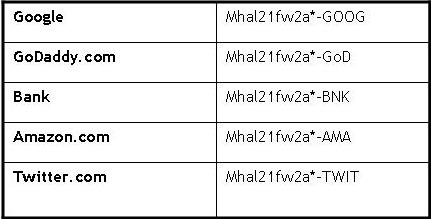When it comes to passwords, there are two objectives we need to achieve.
Passwords need to be secure and easily remembered and accessible.
In today’s climate of multiple logins to our social networks, websites, banks, email, etc, we tend to get lazy and stick to a single password which we use everywhere, which poses a great security risk. Even if it is complex, for example T4%gd#3Dv6, if it is used everywhere, someone can pick it up pretty easily, and it is also hard to memorise and recall. The other option is that we have multiple passwords, and with this we often have trouble remembering all of them.
Keep in mind changing a password across so many different applications is a time-consuming experience. However, we should aim to change our passwords as often as possible, about once every three or four months should be fine.
Here are a few tips to help you both remember your password pretty easily, and also make it as secure as possible.
The standard security requirements for a password are:
Step 1
Pick a meme which you can easily remember e.g. a line from a movie you like, a lyric from a song, your favourite nursery rhyme, etc. For the purpose of this example let’s use a nursery rhyme: Mary Had A Little Lamb, It’s Fleece Was White As Snow. Take the first letters of each of the words in this rhyme and make an acronym. So now we have: MHALLIFWWAS
Step2
Transform these letters, adding some form of complexity to them to make them more secure. By doing this we will arrive at the Base Password. You can be really creative with this, but be sure that you can remember your own rules and apply them uniformly.
Here’s an example…

Step3
Create Short codes of about three to four letters to represent each site or application for which you require a password. You then add these short codes to the base password, and you can then have distinct passwords for each of your applications. Example below:

Step 4
Every three to four months create a new base password, by choosing another one of your favourite memes, and keep the rule structure and balance structure the same. To remember it easily, sing the tune of the nursery rhyme in your head, keep a picture from the movie which the line came from, write down the song name and artist or put its mp3 on your desktop.
This will allow you to have a really secure password every time and always have it right at your fingertips.
The above was adapted from an internal work mail and I found it extremely useful and just had to share it. It greatly reduces the unproductive time at work, IT help desk technicians would testify to the amount of calls they get with users constantly losing their passwords. This method also increases the security of the information of the company and the individual.


